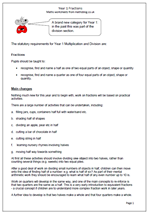 Fractions is a brand new category for Year 1: in the past this was part of the division section.
Fractions is a brand new category for Year 1: in the past this was part of the division section.
The statutory requirements for Year 1 Multiplication and Division are:
Fractions
Pupils should be taught to:
• recognise, find and name a half as one of two equal parts of an object, shape or quantity
• recognise, find and name a quarter as one of four equal parts of an object, shape or quantity.
Main changes
Nothing much new for this year and to begin with, work on fractions will be based on practical activities.
There are a large number of activities that can be undertaken, including:
a. filling jars, cups, containers half full with water/sand etc.
b. shading half of shapes
c. dividing an apple, pear etc in half
d. cutting a bar of chocolate in half
e. cutting string in half
f. learning nursery rhymes involving halves
g. moving half way towards something
At first all these activities should involve dividing one object into two halves, rather than counting several things (e.g. sweets) into two equal piles.
After a good deal of work on dividing small numbers of objects in half, children can then move onto the idea of finding half of a number: e.g. what is half of six? As part of their mental arithmetic work they should be encouraged to learn what half of any even number up to 10 is.
Work on quarters will develop in the same way, and one of the main concepts to re-inforce is that two quarters are the same as a half. This is a very early introduction to equivalent fractions – a crucial concept if children are to understand more complex fraction work in later years.
A further idea to develop is that two halves make a whole and that four quarters make a whole.
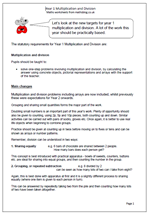

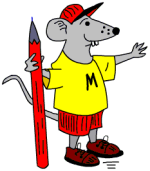
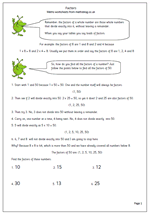
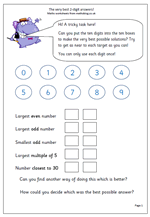
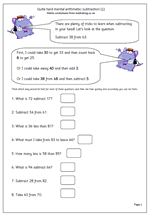
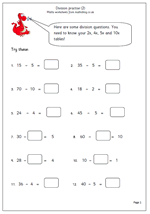
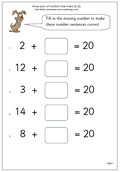
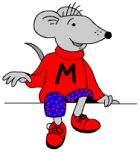 Welcome to a new term and plenty of new maths material coming up over the next few months.
Welcome to a new term and plenty of new maths material coming up over the next few months.